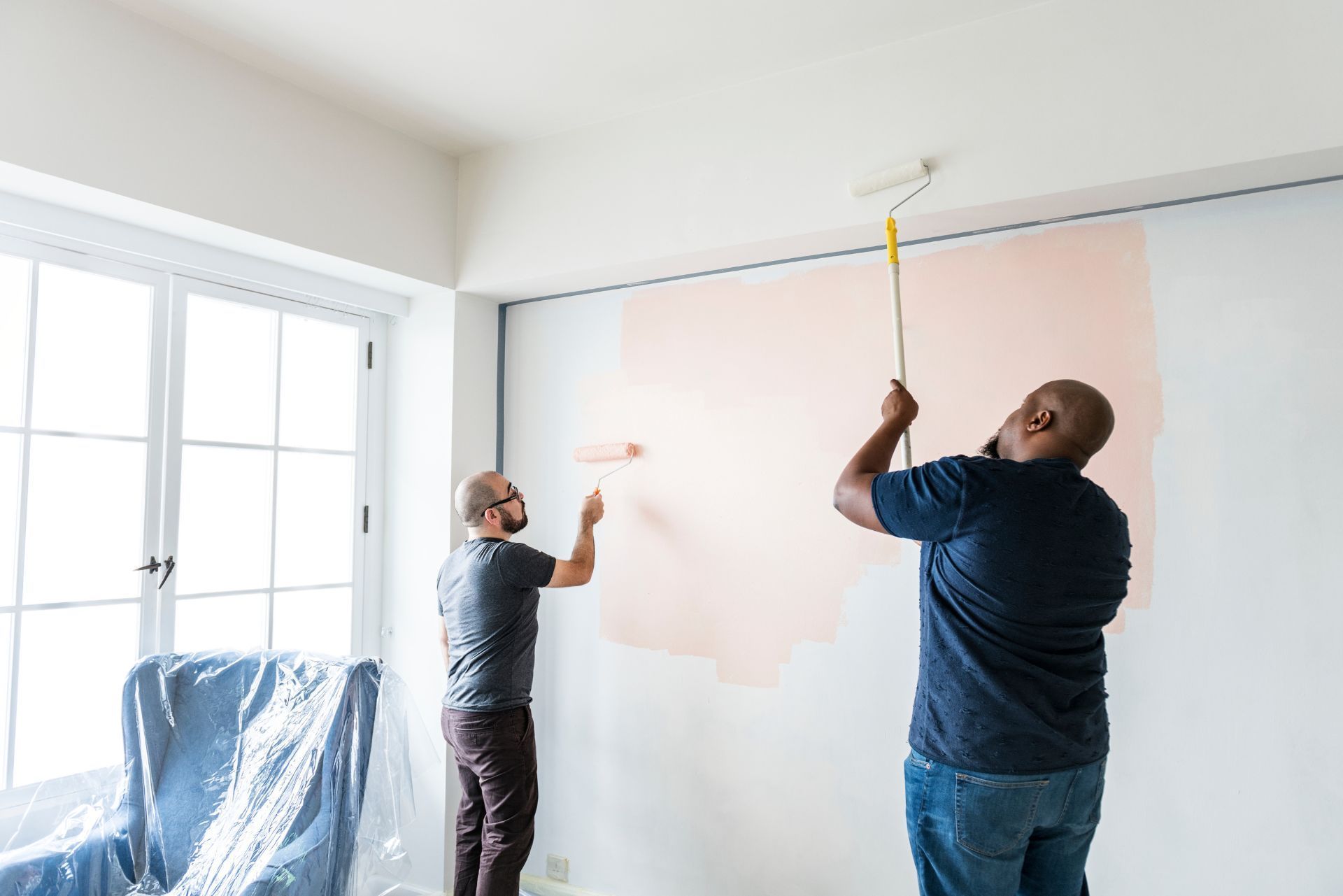Top 3 Recommended Policies

When it comes to painting projects, whether interior or exterior, understanding the insurance landscape in Florida is crucial for both homeowners and contractors. This article delves into the various aspects of painting insurance, including the types of coverage available, the importance of having insurance, and how to navigate the insurance process effectively. By the end, readers will have a comprehensive understanding of painting insurance in Florida.
Understanding Painting Insurance
Painting insurance is designed to protect contractors and homeowners from potential risks associated with painting projects. This type of insurance can cover a variety of incidents, from property damage to bodily injury, ensuring that both parties are safeguarded during the painting process.
Types of Painting Insurance
There are several types of insurance that painters and contractors should consider. The most common include:
- General Liability Insurance: This is the most essential type of insurance for painting contractors. It covers third-party bodily injury and property damage that may occur during the course of a project.
- Workers' Compensation Insurance: Required in Florida for businesses with employees, this insurance protects workers who may be injured on the job, covering medical expenses and lost wages.
- Commercial Auto Insurance: If a contractor uses vehicles for business purposes, this insurance covers accidents and damages related to those vehicles.
Why Insurance Matters
Having the right insurance is not just a legal requirement; it also provides peace of mind. For homeowners, hiring a painter with adequate insurance means that they are protected from potential liabilities. For contractors, insurance is essential to safeguard their business and financial well-being.
Moreover, in Florida, where weather conditions can be unpredictable, insurance can cover damages caused by unforeseen events, such as storms or flooding, which can affect ongoing painting projects. This is particularly important in a state known for its tropical storms and hurricanes, where a sudden downpour can lead to significant delays and additional costs. Contractors who are insured can also demonstrate their professionalism and reliability, which can be a deciding factor for homeowners when selecting a painter.
Additionally, painting insurance can also encompass specialized coverage options, such as equipment insurance, which protects tools and machinery used on the job site. This is crucial for contractors who rely on expensive equipment to deliver quality work. In the event of theft or damage to these tools, having the right insurance can prevent financial strain and ensure that projects can continue without significant interruption. Furthermore, liability insurance can also extend to cover any damages that may occur after the project is completed, providing an extra layer of security for both the contractor and the homeowner.

Choosing the Right Insurance Policy
When selecting an insurance policy, it is important to consider various factors that can influence coverage and costs. Each contractor's needs may differ, so a tailored approach is essential.
Assessing Coverage Needs
Contractors should evaluate the scope of their work and the risks involved. For instance, a contractor specializing in residential painting may have different coverage needs compared to one who handles commercial projects. Factors to consider include:
- The size of the projects undertaken
- The number of employees
- Types of materials used
- Potential hazards associated with specific jobs
Additionally, it is crucial for contractors to think about their client base and the nature of their contracts. For example, if a contractor frequently works with high-profile clients or on government projects, they may need to secure higher liability limits to meet contractual obligations. Understanding the specific requirements of each job can help in determining the appropriate level of coverage needed to protect both the contractor and their clients.
Comparing Insurance Providers
Not all insurance providers offer the same coverage options or pricing. It is advisable to shop around and compare quotes from multiple insurers. Look for providers that specialize in contractor insurance, as they will have a better understanding of the unique risks involved in the painting industry.
Reading reviews and seeking recommendations from other contractors can also provide valuable insights into the reliability and service quality of different insurance companies. Furthermore, it may be beneficial to inquire about the claims process of each provider. A company that has a streamlined and efficient claims process can save contractors significant time and stress in the event of an incident. Understanding the nuances of each policy, including exclusions and endorsements, can also help contractors make informed decisions that align with their business needs.
The Cost of Painting Insurance in Florida
The cost of painting insurance can vary widely based on several factors, including the size of the business, the number of employees, and the types of projects undertaken. Understanding these costs is vital for contractors to budget effectively.
Factors Influencing Insurance Costs
Several factors can impact the cost of painting insurance:
- Business Size: Larger businesses with more employees typically face higher premiums due to increased risk.
- Claims History: Contractors with a history of claims may see higher rates, as insurers perceive them as higher risk.
- Coverage Limits: Higher coverage limits will generally result in higher premiums. Contractors should balance their coverage needs with their budget.
Average Premiums
On average, painting contractors in Florida can expect to pay anywhere from $500 to $2,000 annually for general liability insurance. Workers' compensation can add additional costs, with premiums often based on payroll size and risk classification.
It is essential for contractors to obtain multiple quotes and discuss their specific needs with potential insurers to get the most accurate pricing.
In addition to the factors mentioned, the type of projects a painting contractor undertakes can significantly influence insurance costs. For instance, contractors who specialize in high-risk jobs, such as industrial painting or working at heights, may face steeper premiums compared to those focused on residential projects. This is because the likelihood of accidents and claims increases in more hazardous environments. Furthermore, the location of the business can also play a role; areas with higher rates of natural disasters, such as hurricanes in Florida, may lead to increased insurance rates due to the heightened risk of property damage.
Another important consideration for contractors is the inclusion of additional coverage options. While basic general liability insurance is crucial, many contractors opt for additional policies such as equipment coverage or commercial auto insurance, especially if they rely on vehicles for transporting tools and materials. These additional policies can provide peace of mind and financial protection, but they will also contribute to the overall cost of insurance. Therefore, it's essential for contractors to evaluate their specific needs and risks to ensure they are adequately covered without overextending their budgets.
Common Exclusions in Painting Insurance
While painting insurance provides valuable protection, it is important to be aware of common exclusions that may not be covered under standard policies. Understanding these exclusions can help contractors and homeowners avoid unexpected liabilities. By familiarizing themselves with the nuances of their insurance coverage, both parties can ensure they are adequately protected against potential risks associated with painting projects.
General Exclusions
Some common exclusions in painting insurance policies include:
- Intentional Damage: Any damage caused intentionally or due to negligence is typically not covered. This means that if a contractor or homeowner deliberately causes harm to a property or fails to adhere to safety protocols, they may find themselves financially responsible for the damages incurred.
- Wear and Tear: Normal wear and tear on surfaces being painted is generally excluded from coverage. This exclusion highlights the importance of routine maintenance and care, as insurance will not cover the gradual deterioration of materials that occurs over time.
- Contractual Liability: If a contractor assumes liability through a contract, it may not be covered by insurance. This can be particularly relevant in situations where a contractor agrees to take on additional responsibilities beyond standard practices, potentially leading to significant financial exposure.
Special Situations
Certain situations may also be excluded, such as:
- Environmental Hazards: Damage caused by hazardous materials, such as lead paint, may not be covered unless specifically included in the policy. This exclusion is particularly critical for older homes, where lead paint may still be present, emphasizing the need for thorough inspections and compliance with safety regulations.
- Equipment Damage: Damage to tools and equipment owned by the contractor may not be covered under general liability insurance. Contractors should consider obtaining separate coverage for their equipment to protect against theft, loss, or damage that could disrupt their operations and lead to financial loss.
Moreover, it is essential for contractors to understand that certain types of projects may come with additional risks that are not covered under standard policies. For instance, specialized painting jobs, such as those involving high-rise buildings or intricate artistic murals, may require additional endorsements or separate policies to ensure comprehensive coverage. Engaging in these types of projects without the proper insurance can leave contractors vulnerable to significant liabilities, especially if accidents occur during the course of work.
Homeowners should also be aware of the implications of these exclusions when hiring a contractor. Conducting thorough research and asking for proof of insurance can help ensure that the contractor is adequately covered for the specific type of work being performed. Additionally, homeowners may want to consider their own insurance policies to determine if they have adequate protection against potential damages that could arise from painting projects, further safeguarding their investments and peace of mind.
In the unfortunate event of an incident requiring a claim, understanding the claims process is essential for contractors and homeowners alike. A smooth claims process can alleviate stress and ensure that damages are addressed promptly. Familiarizing oneself with the intricacies of this process can empower individuals to advocate for their needs effectively, ensuring that they receive the compensation they are entitled to without unnecessary delays.
Steps to File a Claim
Filing a claim typically involves the following steps:
- Notify the Insurance Company: As soon as an incident occurs, contact the insurance provider to report the event.
- Document the Incident: Take photos and gather evidence related to the incident, including witness statements if applicable.
- Complete the Claim Form: Fill out the necessary claim forms provided by the insurance company, ensuring all information is accurate and complete.
- Follow Up: Stay in contact with the insurance adjuster to track the progress of the claim and provide any additional information as needed.
Tips for a Successful Claim
To increase the chances of a successful claim, consider the following tips:
- Be prompt in reporting incidents to avoid delays.
- Maintain clear and open communication with the insurance provider.
- Keep thorough records of all communications and documents related to the claim.
Additionally, it is beneficial to familiarize yourself with your specific policy details before an incident occurs. Understanding the coverage limits, deductibles, and exclusions can provide valuable insight into what to expect during the claims process. This knowledge can help you prepare better documentation and arguments when discussing your claim with your insurance adjuster. Furthermore, consider consulting with a public adjuster if you feel overwhelmed or believe your claim may be undervalued. These professionals can advocate on your behalf, ensuring that your claim is handled fairly and that you receive the compensation you deserve.
Moreover, it’s important to remain patient throughout the process. Claims can sometimes take longer than expected due to various factors, including the complexity of the incident and the insurance company’s workload. Keeping a positive mindset and being proactive in your follow-ups can make a significant difference. Remember, the goal is to restore your property and peace of mind, so staying organized and persistent will ultimately serve you well in navigating the claims process.

Conclusion
Understanding Florida's exterior and interior painting insurance landscape is essential for both contractors and homeowners. By being informed about the types of coverage available, the importance of insurance, and how to navigate the claims process, individuals can better protect themselves against potential risks associated with painting projects.
Whether you are a contractor seeking the right insurance policy or a homeowner looking to hire a painter, taking the time to understand these aspects will lead to more secure and successful painting endeavors. With the right insurance in place, both parties can focus on achieving beautiful results without the worry of unforeseen liabilities.
Contact Us


